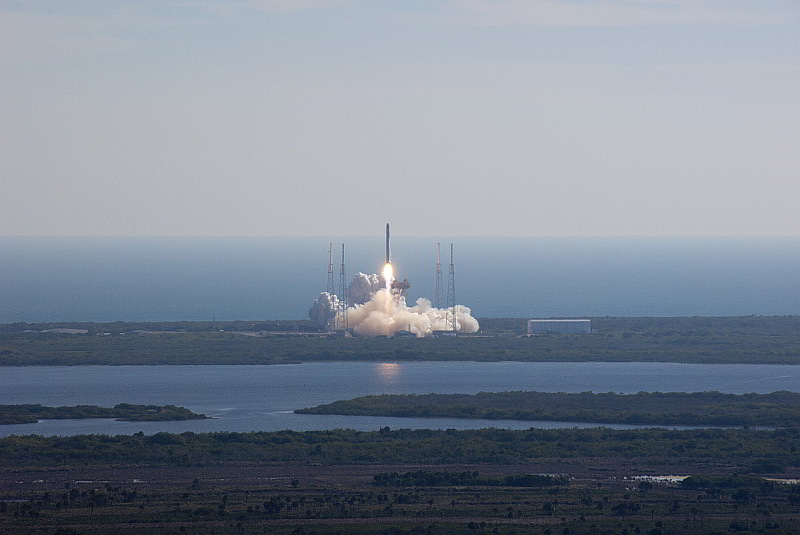
Over the past several months, NASA environmental and project management staff have worked with SpaceX to evaluate the KSC Roberts Road Expansion and its facilities. Located near the company’s HangarX facility, the operations area is used for processing and storage of the company’s Falcon boosters and payload fairings.
“NASA is working with SpaceX as the company works to centralize much of its operations at Roberts Road,” said Jerad Merbitz, SpaceX customer advocate at NASA. “In addition to HangarX and the new launch support facility, which serves as their payload fairing processing facility, the additional build-out of the site is focusing on Starship development plus integration and support of future Starship missions at Kennedy Space Center.”
The SpaceX proposal includes constructing office space at Roberts Road as well as a 1.6-mile connector road to the site.
The next step in the process for the Roberts Road facility began June 29, 2022 – the inter-agency and public scoping period, through which NASA describes proposed development actions and potential alternatives. Scoping is generally defined as “early public consultation” and is one of the first steps of the National Environmental Policy Act (NEPA) review process. The general public will have until July 29, 2022, to offer input to NASA on potentially affected resources, environmental issues, and the agency’s planned approach to the environmental-analysis process. Later in the NEPA process, the Draft Environmental Assessment also will be made available for public review and comment.

“All upgrades to existing infrastructure and new development on Kennedy property must comply with NEPA,” said Don Dankert, technical lead for the Kennedy Environmental Planning Office. “All projects from commercial partners and NASA, whether government or private, are evaluated through our office to ensure compliance with state environmental regulations as well as federal.”
NEPA requires the agency to make decisions based on environmental factors over technical and economic factors, involve the public early in its environmental analysis process and document it in plain language for the public and decision makers, and find the least environmentally damaging ways to work.
Other commercial providers such as Blue Origin, Boeing, Sierra Space, and United Launch Alliance are among the companies investing at the spaceport, bolstering NASA missions as well as private spaceflight. Kennedy offers commercial launchers the ideal location to consolidate manufacturing, integration, testing, in campus-like areas, on same the spaceport where they will launch.
As part of the development process, NASA also ensures upgrades and new facilities remain compliant with the requirements of the property agreement, including those related to construction, safety, and environmental conditions. With all projects – big or small – NASA maintains its strong commitment to sustainability.
Ensuring sustainability is a NASA priority and particularly important at Kennedy, which shares its boundary with the Merritt Island National Wildlife Refuge, home to more than 1,000 species of plants, 117 species of fish, 68 species of amphibians and reptiles, 330 species of birds, and 31 different types of mammals. The joint federal partnership with wildlife refuge and the Canaveral National Seashore ensures the preservation of Kennedy’s natural resources – and the spaceport’s ability to meet the agency’s long-term goals.
In addition to the KSC Roberts Road expansion, SpaceX is making upgrades to Launch Complex 39A (LC-39A) to support future Starship launches. NASA is working with SpaceX to ensure the updated pad remains compliant with the requirements of the company’s property agreement for the use of launch complex, including requirements related to construction, safety, and environmental concerns. An Environmental Assessment was completed and a Finding of No Significant Impact (FONSI) was issued in September 2019 in accordance with the NEPA process.
The historic Launch Complex 39A is an important asset and vital to the agency’s plans for access to the International Space Station and potential future missions at the pad to the Moon as a part of the Artemis program. NASA and SpaceX are working closely together to ensure future operations are capable of continuing as seamlessly as possible for NASA’s important missions, as well as balance the needs of the agency’s commercial partners for its fully private missions.
NASA also has received a SpaceX proposal for a future launch and landing site, Launch Complex 49, for the Starship rocket. The 175-acre site is located north of Launch Complex 39B within the center’s security perimeter. NASA continues working with SpaceX to conduct a comprehensive review to define the project. Once the scope of the project is defined, NASA would begin environmental and other assessments, including potential alternate locations and public input, as required by NEPA.
“What we’re enabling through all of these projects is commercial access to space, which overall enables NASA and our partners to lower the costs,” said Robert Holl, Kennedy’s Spaceport Management & Integration Division chief. “NASA gets a benefit by getting a better value in order to accommodate more missions.”
Visit SpaceX Roberts Road Operational Area Expansion at the Kennedy Space Center for more information.

Source: https://www.nasa.gov/feature/nasa-reviews-spacex-roberts-road-expansion-at-kennedy-space-center
Author: Jason Costa
Publisher: NASA’s John F. Kennedy Space Center
Published: June 30, 2022
Related Articles:
SpaceX Roberts Road Operational Area Expansion at the Kennedy Space Center
Scoping Comments by Brevard Environmental Groups

